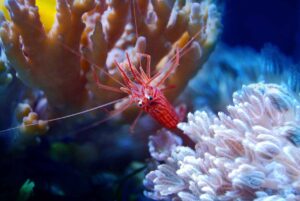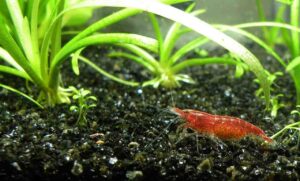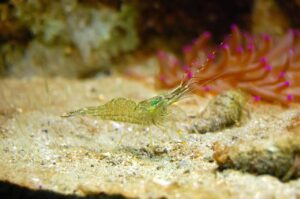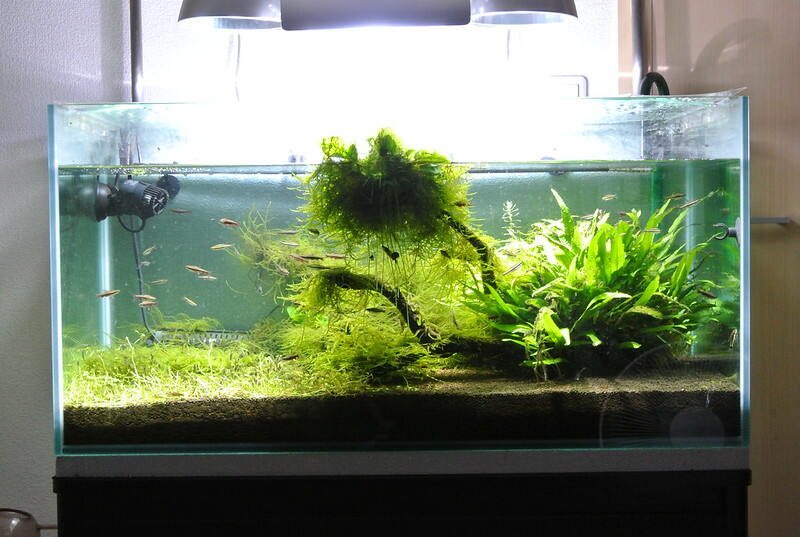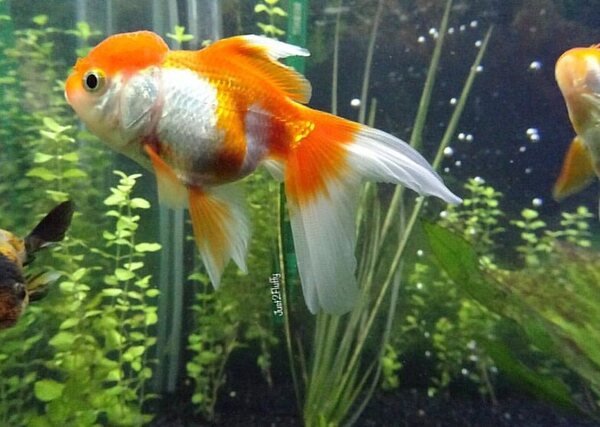Ever peeked into your shrimp tank and noticed a ghostly, transparent shell lying on the bottom? It’s a strange sight at first—but don’t panic! Your shrimp probably isn’t dead. In fact, this is one of the most positive signs that things are going well in your aquarium.
That clear, hollow shell means your shrimp has successfully molted—a natural and crucial part of their growth and survival. Let’s dive into what molting really means, why shrimp do it, and how you can support them through this delicate process.
Yes, Shrimp Do Grow New Shells!
Shrimp don’t wear the same shell forever. Think of their exoskeleton like a pair of shoes on a growing kid. As the shrimp gets bigger, its hard shell doesn’t expand. It must instead shed its old shell and grow a new one that is larger and more resilient.
This process is called molting, and it’s essential for growth, healing, and reproduction. It may seem alarming at first, especially if you’re new to shrimp keeping, but it’s a sign that your shrimp is growing and developing properly.
How Does Molting Work?
Here’s a simple breakdown of the molting cycle:
- Preparation – The shrimp stops eating as much and may hide more often.
- Shedding – The shrimp gradually retreats from the old exoskeleton as it splits close to the neck.
- Recovery – The shrimp is delicate and extremely susceptible after emerging. While the new shell hardens, it hides.
- Regeneration – Any lost limbs, antennae, or damaged tissue begin to regrow through successive molts.
The new exoskeleton typically takes 12 to 72 hours to fully solidify. During this time, the shrimp is at its most vulnerable to injuries, tank mates, and poor conditions.
Why Do Aquarium Shrimp Grow New Shells?
Molting isn’t just about getting bigger—it also plays several critical roles in shrimp health:
🛡 Growth – Shedding is required to enlarge because the exoskeleton does not grow.
🔧 Repair – Molting allows shrimp to heal injuries or cracks in their shell.
🦐 Regeneration – Lost limbs or antennae slowly regrow over several molting cycles.
💕 Reproduction – For many species, especially females, molting is the signal that they’re ready to breed.
Shrimp may cease eating or become less active before molting, however, this is common. It’s their way of preparing for one of the most intense biological events in their life.
My First Molting Surprise
I still remember seeing a molt for the first time. I noticed what appeared to be a dead red cherry shrimp as I peeked into my tank. The identical shrimp, however, were swimming around close as if nothing had occurred!
The “dead body” was little more than a discarded exoskeleton, transparent, hollow, and a touch unsettling. Over time, I learned to expect these molts and even look forward to them. Each one is a sign your shrimp are growing and staying healthy.
How to Help Your Shrimp During Molting
For shrimp, molting is one of the riskiest periods and can be quite stressful. They’re soft, weak, and prone to injury. But with the right care, you can dramatically increase their chances of success.
Here are some key things you can do:
1. Keep Water Parameters Stable
Shrimp are extremely sensitive to water conditions. Molting issues or even mortality may result from abrupt changes in pH, temperature, or hardness.
Ideal parameters for most freshwater shrimp:
- Temperature: 72–78°F (22–26°C)
- pH: 6.5–7.5
- GH (General Hardness): 4–8 dGH
- KH (Carbonate Hardness): 0–4 dKH
- TDS (Total Dissolved Solids): 150–250 ppm
I personally test my water weekly with a liquid test kit and a digital TDS meter. These tools help me catch issues early—before they affect my shrimp.
2. Feed a Molting-Friendly Diet
Molting takes a lot of energy. Shrimp need a balanced diet rich in calcium, minerals, and vitamins to form a strong new shell.
My go-to foods:
- Blanched vegetables – Spinach, zucchini, and kale.
- Algae wafers – They are nutrient-dense and easy to nibble.
- Shrimp-specific pellets – Formulated with calcium and trace minerals.
- Tannins and trace – Indian almond leaves are a natural source of some elements.
Feeding variety helps ensure your shrimp get everything they need—especially young shrimp, who molt much more frequently. Understanding do aquarium shrimp grow new shells helps you support their health. In short, yes—do aquarium shrimp grow new shells? They sure do, and it’s a vital part of their life.
3. Add Natural Calcium Sources
To harden their shells, shrimp require calcium. Insufficient amounts may cause the new exoskeleton to stay pliable, which could result in malformations or even death.
What I use:
- Crushed coral – Mixed into the substrate to gradually increase its hardness.
- Cuttlebone – A slow-releasing calcium block that shrimp can nibble.
- Liquid mineral additives – Especially helpful in RO (reverse osmosis) water.
Modest increases in calcium can have a significant impact on molt success rates.
4. Provide Safe Hiding Places
After molting, shrimp avoid the spotlight. They need secure, dark spots to rest while their shell hardens.
Ideal hiding spots include:
- Java moss or other thick plants
- Cholla wood or driftwood
- Shrimp tubes and coconut caves
- Leaf litter, like almond or guava leaves
Losing a few to hostile fish taught me this lesson the hard way.
5. Leave Old Shells in the Tank
That clear shell you see? Don’t remove it right away. Shrimp often eat their old exoskeletons, reabsorbing calcium and nutrients for future molts.
If you must clean the tank, wait 2–3 days before removing old shells. This gives your shrimp time to feed on them naturally.
Troubleshooting: When Molting Goes Wrong
Unfortunately, molting doesn’t always go as planned. Sometimes a shrimp can get stuck or fail to shed completely.
Common Signs of Molting Issues:
- 🐚 White, cloudy shell – Sign of a mineral deficiency.
- 💀 Shrimp on its side, motionless – Could be failed molt or exhaustion.
- 🪳 Half-shed shrimp – Often caused by poor water quality or extreme stress.
Quick Fixes:
- Use appropriately conditioned water and perform a little water change (10–15%).
- Boost calcium with a cuttlebone or liquid additive.
- Dim the lights, reduce noise, and avoid adding anything new to the tank.
Stress is a silent killer—especially during molting. Always introduce new fish or changes gradually.
FAQs: Your Shrimp Molting Questions Answered
Q: How often do shrimp molt?
A: Baby shrimp molt every few days, while adults molt every 3–6 weeks, depending on age and environment.
Q: Can a shrimp die from molting?
A: Yes, if water quality is poor or they’re weak. Incomplete molts are often fatal without immediate intervention.
Q: Should I remove a molted shell?
A: No. Leave it for 2–3 days—shrimp usually eat it to reclaim minerals.
Q: Is hiding normal after molting?
A: Yes. Newly molted shrimp are soft and will stay hidden until their new shell hardens.
The Bottom Line: Molting Is a Sign of a Healthy Shrimp Tank
A common question among shrimp keepers is: Do aquarium shrimp grow new shells? Yes—they do, and it’s a natural part of their growth process called molting. Young shrimp molt frequently, while adults do so every few weeks. So, if you’re wondering, do aquarium shrimp grow new shells regularly? The answer is absolutely.
Molting is a natural part of shrimp life—and one of the best indicators of good care. If you regularly see discarded shells and active, colorful shrimp, you’re doing it right.
By keeping water clean and stable, providing a nutritious diet, and giving your shrimp safe spaces to hide, you’re creating the perfect environment for successful molts.
So next time you see that eerie, ghost-like shell on the tank floor, give yourself a high five. It means your shrimp are healthy, happy, and growing.
💡 Want More Aquatic Tips?
- Cichlids Care Guide – Learn how to create a vibrant, peaceful cichlid tank.
- How Many Guppies in a 10-Gallon Tank? – Avoid overcrowding with this quick guide.
- Cherry Shrimp Tips for Beginners – Master your first shrimp colony in no time!
Happy Shrimp Keeping! 🦐


